DIGITAL EXCLUSION IN OAKLAND
In Partnership with HubbleIQ & Oakland Unified School District
Urban settings and city centers across the United States face unique challenges in combating the digital divide, in part because of false narratives around digital inclusion and the ubiquity of broadband access. Oakland in particular–with poorly-maintained and oversubscribed networks–has been the subject of great scrutiny when naming the persistence of digital exclusion in our city.
The End User Experience
In challenging the notion that Oakland residents–especially those located in historically redlined communities like West Oakland, Fruitvale, and East Oakland–face no barriers to internet connectivity, ISPs rely on a flawed definition of what it means to be connected, often centered around the physical presence of broadband cables (i.e. internet availability) and not the actual end-user experience of those paying to connect the internet available to them (i.e. internet performance). The purpose of this study was to learn more about end-user experience in instances where the subscriber had availability and adopted internet service.
SUMMARY OF FINDINGS:
#OaklandUndivided’s initial analyses of over half a million internet performance tests from over 18,000 unique locations indicates:
Race and income are the best predictors of whether a community has access to reliable, high-speed internet with poor communities and communities of color disproportionately on the wrong side of the digital divide
Both wireline and wireless internet companies fail to provide reliable, high-speed internet in Oakland’s historically redlined communities (i.e., West Oakland, Fruitvale, and Deep East Oakland)
Poor communities do NOT get the reliable broadband connections advertised to them
Home Owners Loan Corporation redlining map of Oakland from 1937
DATA & METHODS
In partnership with HubbleIQ and Oakland Unified School District (OUSD), #OaklandUndivided employed a proprietary technology that catalogs internet connection speeds through an internet-based web browser extension integrated into district-loaned computers. #OaklandUndivided has compiled a comprehensive data bank of de-identified internet performance test results for all Oakland neighborhoods. This initial set of analyses includes half a million individual speed tests collected over a two-month time period from over 18,000 unique locations.
RESULTS
Our initial set of analyses allows us to provide a descriptive assessment of internet performance across Oakland. Our analysis included data from the largest wireline and wireless internet service providers in Oakland—AT&T, Comcast, Sonic, and T-Mobile. Using the California Public Utility Commission’s established threshold for broadband service–where locations should be characterized as follows:
UNSERVED with connection speeds below 25 Mbps download and 3 Mbps upload
UNDERSERVED with connection speeds below 100 Mbps download and 20 Mbps upload
SERVED with connection speeds exceeding 100 Mpbs download and 20 Mbps upload
OVERALL PERFORMANCE
General Speed Characteristics:
Average Download Speed: 80 mbps
Median Download Speed: 21 mbps
MEDIAN DOWNLOAD SPEED MAP
MAP ANALYSIS
Zip Code: 94618
Oakland’s highest median household income: $220k
Total speed tests taken in 94618: 8,284 tests
Average speed according to OUSD Devices: 97 mbps
Lowest People of Color % in Oakland: 31%
Zip Code: 94621
Oakland’s lowest median household income: $54k
Total speed tests taken in 94621: 62,840 tests
Average speed according to OUSD Devices: 15 Mbps
Highest People of Color % in Oakland: 91%
Connections in our highest income zip code—with the largest population of White residents—were nearly ten times faster than in our poorest—with the city's largest population of People of Color
Over half of the 500k speed tests we ran came back with speeds less than 25 mbps. And while the average speed (80 mbps) approaches our definition of “served” (100 mbps), our median speed test was only 21 mbps (unserved), with considerable geographic variation. The zip-code based variation in speeds mirror the Home Owners Loan Corporation redlining maps from 1937, established during discriminatory New Deal-era policies.
PERFORMANCE RESULTS
WIRELESS & WIRELINE
(Comcast, AT&T, Sonic, & T-Mobile)
Total Number of Students: 15,194
Total Number of Tests: 472,431
Unserved (speed <25 mbps):
53% (249,092 of 472,431 tests)Underserved (speed b/w 25-100mbps):
23% (110,951 of 472,431 tests)Served (speed >100 mbps):
24% (112,388 of 472,431 tests)
SPEED TEST RESULTS
(Comcast, AT&T, Sonic, & T-Mobile)
STUDENT-LEVEL EXPERIENCE RELIABILITY STATISTICS
24% of students (wireline & wireless) spent over HALF of their time on internet speeds lower than 25/3.
53% of students in our sample experienced a speed classified as “unserved” at least once over our two-month speed test window.


